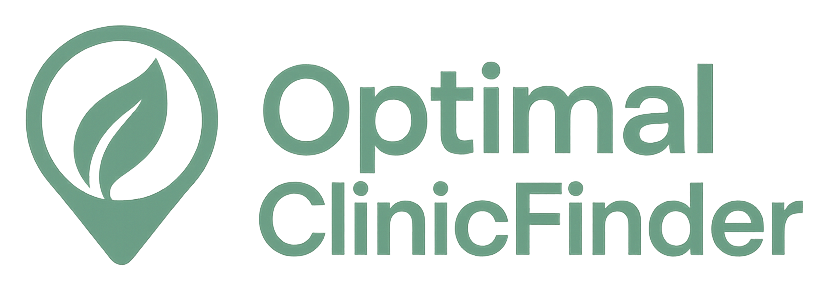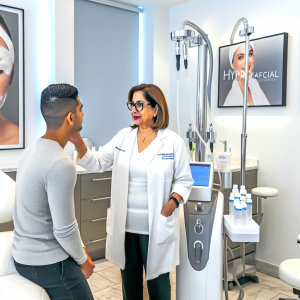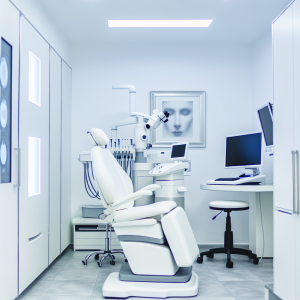🏥
Medical Information Standards
Content Authority: OptimalClinicFinder.com is a comprehensive medical directory platform connecting patients with qualified Facials providers. Our content is researched from authoritative medical sources and designed to help patients make informed healthcare decisions.
Understanding Facial Waxing: Techniques and Skin Physiology
Facial waxing involves the removal of unwanted hair from delicate facial areas using heated wax that adheres to hair shafts and removes them from the follicle. The process differs significantly from body waxing due to the increased sensitivity of facial skin, thinner epidermis, and proximity to sensitive areas like the eyes and lips. Professional facial waxing requires specialized techniques, appropriate wax formulations, and thorough understanding of facial anatomy.
The facial hair growth cycle consists of anagen (growth), catagen (transition), and telogen (resting) phases, with facial hair typically having shorter cycles than body hair. Effective waxing targets hairs in the anagen phase when they’re firmly anchored in the follicle, resulting in complete removal and longer-lasting results. Understanding these cycles helps both practitioners and clients optimize timing for treatments and set realistic expectations for regrowth patterns.
💡
Did You Know?
Clinical studies show that Facials patients achieve excellent results when combined with professional-grade aftercare products.
Professional Standards and Provider Certification
The quality and safety of facial waxing services depend heavily on provider training and certification. Licensed aestheticians undergo extensive education covering skin anatomy, hair growth patterns, wax chemistry, and safety protocols specific to facial treatments. Many states require additional certification for facial services due to the increased risk associated with treating delicate facial skin.
Top-tier providers often pursue advanced training through professional organizations, manufacturer certification programs, and continuing education courses that cover the latest techniques and safety protocols. They understand the importance of proper skin assessment, appropriate product selection, and post-treatment care that minimizes complications while maximizing results. When searching for providers, clients should verify licensing, ask about specialized facial waxing training, and review before-and-after photos of previous work.
Treatment Areas and Specialized Techniques
Facial waxing encompasses multiple treatment areas, each requiring specific techniques and considerations. Eyebrow waxing remains the most popular service, involving precise hair removal to create desired shapes while maintaining natural arch structure. Upper lip waxing addresses fine to coarse hair above the lip line, requiring careful technique to avoid skin irritation in this sensitive area.
Full-face waxing has gained popularity as clients seek comprehensive hair removal solutions. This advanced service requires exceptional skill to navigate the varied contours of facial skin while avoiding sensitive areas around the eyes, nose, and mouth. Chin and jawline waxing addresses coarser hair growth patterns that may be hormonally influenced, often requiring stronger wax formulations and modified techniques. Each area demands specific positioning, wax application patterns, and removal techniques to ensure optimal results while maintaining skin integrity.
💡
Quick Tip
Facials works best when combined with healthy lifestyle choices for optimal results.
Skin Preparation and Pre-Treatment Protocols
Proper skin preparation significantly impacts facial waxing outcomes and safety. Pre-treatment protocols begin with thorough skin cleansing to remove makeup, oils, and debris that could interfere with wax adhesion. Many professionals incorporate gentle exfoliation to remove dead skin cells and lift ingrown hairs, though this must be balanced against the risk of increased skin sensitivity.
Client consultation includes assessment of current skincare routines, medications that may affect skin sensitivity, and any contraindications to waxing. Retinoids, alpha hydroxy acids, and certain antibiotics can increase skin fragility and risk of adverse reactions. Professional practitioners maintain detailed client records tracking skin responses, preferred techniques, and any modifications needed for optimal results. Some providers now incorporate skin conditioning treatments in the days leading up to waxing appointments to optimize skin health and treatment outcomes.
Modern facial waxing utilizes advanced formulations designed specifically for delicate facial skin. Hard waxes, which don’t require fabric strips for removal, have become increasingly popular for facial applications due to their gentler action and reduced risk of skin damage. These waxes adhere primarily to hair rather than skin, making them ideal for sensitive facial areas.
Temperature control represents a critical safety factor, with facial waxes requiring precise heating to achieve optimal consistency without risking burns. Professional-grade wax warmers maintain consistent temperatures and include safety features to prevent overheating. Wax formulations may include soothing ingredients like chamomile, aloe vera, or anti-inflammatory compounds to minimize post-treatment irritation. The selection of appropriate wax type depends on hair coarseness, skin sensitivity, and treatment area, with experienced practitioners often maintaining multiple formulations to address diverse client needs.
Post-Treatment Care and Complication Management
Post-treatment care protocols are essential for optimal healing and result maintenance. Immediate aftercare includes application of soothing agents to reduce inflammation and antimicrobial products to prevent folliculitis. Clients receive detailed instructions covering activity restrictions, skincare modifications, and signs that warrant professional evaluation.
⚠️
Safety First
Always consult a qualified medical professional before starting Facials. Results vary by individual.
✓
Why Choose Facials?
●
Clinically proven
●
FDA approved
●
Minimal downtime
●
Long-lasting
Common post-waxing reactions include temporary redness, minor swelling, and follicular bumps that typically resolve within 24-48 hours. More concerning complications can include burns from overheated wax, allergic reactions to wax ingredients, or skin lifting in clients using sensitizing medications. Professional providers maintain protocols for managing these complications and maintain relationships with dermatologists for cases requiring medical intervention. Long-term care focuses on maintaining skin health between appointments and optimizing conditions for subsequent treatments.
Cost Factors and Value Considerations
Facial waxing costs vary significantly based on geographic location, provider credentials, salon positioning, and service complexity. Basic eyebrow waxing typically represents the most affordable option, while full-face services command premium pricing due to the time and skill required. High-end salons and medical spas often charge more but may offer superior expertise, premium products, and enhanced aftercare protocols.
Value considerations extend beyond price to include provider experience, facility cleanliness, product quality, and client satisfaction rates. Experienced practitioners may charge higher fees but often deliver superior results with fewer complications, ultimately providing better value than lower-cost alternatives. Many providers offer package deals for regular clients or combination services that include complementary treatments like facials or skin conditioning procedures. Insurance typically doesn’t cover cosmetic facial waxing, though procedures performed for medical reasons like hirsutism may qualify for coverage under specific circumstances.
Facial Waxing Near Me: Provider Selection Strategies
Selecting the right facial waxing provider requires careful evaluation of credentials, facility standards, and client reviews. Start by verifying state licensing and any specialized certifications in facial hair removal techniques. Tour facilities to assess cleanliness, equipment quality, and adherence to sanitation protocols. Experienced providers should be willing to discuss their training, show before-and-after photos, and explain their approach to different skin types and concerns.
Client reviews and referrals provide valuable insights into provider reliability, skill level, and customer service quality. Look for consistent positive feedback regarding results, comfort during treatment, and post-care support. Many top providers offer consultation appointments to assess your specific needs and explain their approach before committing to treatment. This consultation process allows evaluation of the provider’s expertise and communication style while ensuring alignment with your expectations and comfort level.
📚 Medical Authorities & Professional Standards
All Facials procedures should be performed by licensed medical professionals following established clinical guidelines and safety protocols.
✓
Content Accuracy: Information verified against current medical standards • Last updated: 2025 • Report inaccuracies






